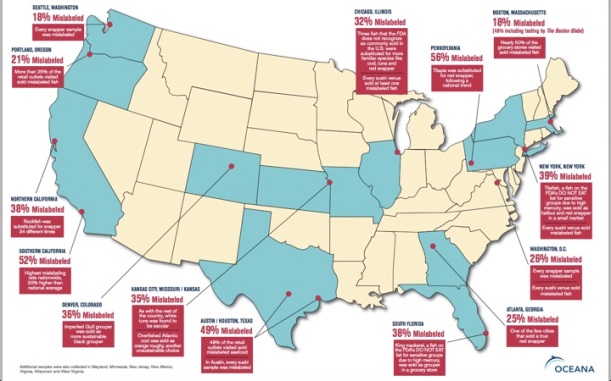
This is pretty shocking news – when testing what kinds of fish are sold under which labels, in some states as many as 52% were mislabeled, mostly in order to sell less expensive fish en lieu of the more high-end ones and still capture the price premium. Not only that, but sometimes fish was even sold that is on the FDA’s “Do Not Eat” list due to high mercury contents. So not only is it harder to make particular choices of what kinds of fish you eat for quality or sustainability criteria, you might not even be able to make health-centric choices. Ugh.
Apparently, fish mislabeling is nothing new, having occurred since the 1990s, due to anti-overfishing restrictions that saw supply for particular species shrink while demand remained high. This is the case for red snapper, for example – and there, 87% of labeled red snapper is actually a different species entirely according to the Oceana study.
Since it is difficult to track down where the mislabeling occurs – on the boat, during processing, in the supply chain or at the retail counter -, it is difficult to combat. And this is not a US centric problem either – according to this BBC article, around one quarter of fish in the EU is estimated to be mislabeled. What is the responsible consumer to do?
As usual cases like these make me fell glad I don’t eat fish, but I guess responsible consumers could try and find trustworthy fishmongers where to buy fish from rather than buy super cheap fish…
Reblogged this on Dr. B. A. Usman's Blog.